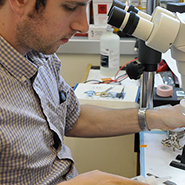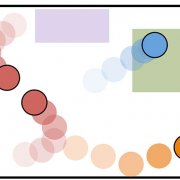Humans acquire their most basic physical concepts early in development, and continue to enrich and expand their intuitive physics throughout life as they are exposed to more and varied dynamical environments. This project introduces a hierarchical Bayesian framework to explain how people can learn physical theories from observation across multiple timescales and levels of abstraction. We work with expressive probabilistic program representations suitable for learning the forces and properties that govern how objects interact in dynamic scenes unfolding over time. The project compares the model with human learners on a challenging task of inferring novel physics in microworlds given short movies. This task mimics the real developmental challenge of learning physics more closely than prior experimental work, by requiring people to reason simultaneously about multiple interacting physical laws and properties. In addition, the project explores rational approximations to an ideal-level model, which complements a top-down Bayesian approach with a more bottom-up feature-based approximate inference scheme.
Development of Intelligence
 Understanding the development of intelligence in a human infant is a key project of CBMM. This project engages the fundamental tradeoff between nature and nurture, or priors and data, and ultimately the origin of priors—how constraints are selected by evolution, encoded in genes, and instantiated in genetically wired brain circuits.
Understanding the development of intelligence in a human infant is a key project of CBMM. This project engages the fundamental tradeoff between nature and nurture, or priors and data, and ultimately the origin of priors—how constraints are selected by evolution, encoded in genes, and instantiated in genetically wired brain circuits.
This project also represents a novel developmental approach to building human-like artificial intelligence systems and comprehensive computational models of human cognitive architecture. Instead of branching out from a single area of adult human intelligence, we start with an integrated cognitive model of multiple core capacities in the young child’s mind, along with a set of developmental or learning mechanisms for scaling up to an adult model.

